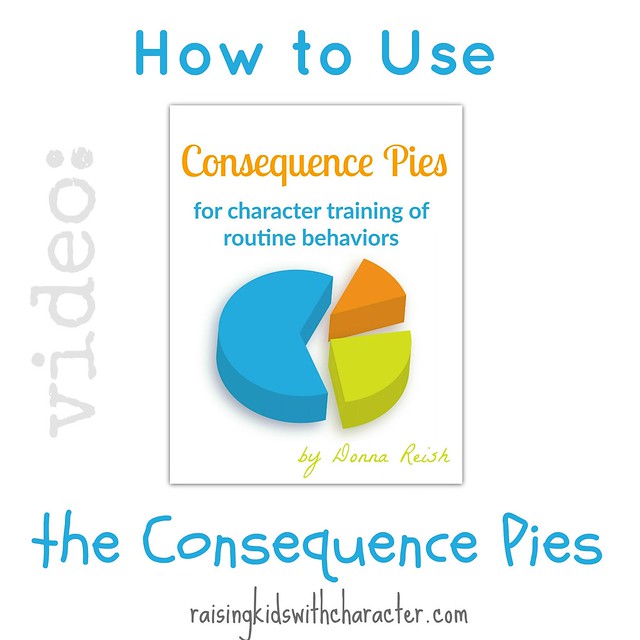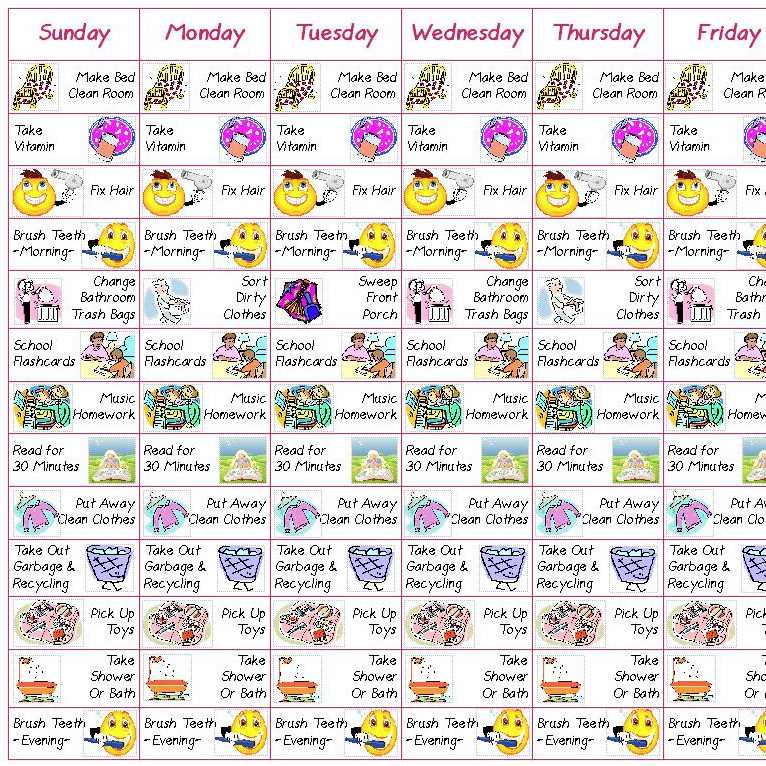by Donna | Apr 2, 2016

I continue to have technical difficulties with YouTube. I have recorded the Wondering Wednesday video “The Four D’s of Behavior” three times now (the past three weeks), and it still isn’t able to be fully uploaded.
I keep trying because I am starting to think it is really needed with all the problems!
So again, I give you a “re-run.”
(more…)
by Donna | Mar 11, 2016

*Learning From Workshops—as easy as ABC…making the changes you want in your home a little at a time
I. Five W’s and H of Character Building
A. Why–
1. Deuteronomy 6: 6 and 7: 6 “And these words that I command you today shall be on your heart.7 You shall teach them diligently to your children, and shall talk of them when you sit in your house, and when you walk by the way, and when you lie down, and when you rise.”
(more…)
by Donna | Mar 9, 2016

Welcome to another Wondering Wednesday podcast episode! In this audio presentation, Donna Reish (of Character Ink Press and Raising Kids With Character) answers questions about faith and character training for young children. Donna begins with the Five W’s and One H of Character Training, reminding parents that we must first have it in our hearts before we can give it to our children. She then delves into laying some foundations with toddlers. Finally, she talks about the four places and times that Deuteronomy tells us to teach our kids God’s Word and ways: when you rise up; when you sit in your house; when you walk by the way; and when you lie down. She gives examples and activities for each time period—focusing on getting to our children’s hearts with unconditional love, intentionality, prioritizing, and selflessness.
(more…)

by Donna | Sep 12, 2013
 |
| image helpformothers
|
Today I would like to leave you some tips for Independent Work Lists–especially for older students (junior high through high school). These will be in no true order–just some things that I want to re-emphasize from the younger ages as well as things that pertain only to olders.
So here we go:
1. Consider the document or chart that works best for your age child now. Most kids in junior high and high school no longer want cutsie charts. Once you decide you want a genuine paper document, then you have to decide how you want it filled in:
a. As he goes, he lists what he does each day, sort of a daily school journal.
b. You write in a planner each week for him for the following week (page number, number of pages, lesso number, etc.).
c. You have a standard daily Independent Work List that you create in your scheduling program or Excel—that you can customize when something changes, etc. You print this off, put it on a clip board, and have him highlight or mark off as he does things each day.
2. Consider if you are going to make his Independent Work List for him completely or if you will have his input. We liked to choose our high schoolers materials, schedules, lists, etc., with them, so that they have some input in the process–and to help model for them/teach them how to organize, prioritize, etc.
3. Still use some of the elements from the earlier suggestions (for younger kids) that are universal, such as:
a. School is your child’s occupation. It is what he should be about during the day.
b. Put the daily tasks in sections according to time of day or importance–and also in order according to when they should be done.
c. Do your part to be sure that charts are updated, printed, and ready. I know from personal experience that if we are laxed in this–they become laxed real quick!
d. Have a system that works for you every day. Have his list on a clip board that he carries with him/keeps in his school area. Have him highlight as he does things. Have him leave it on your desk when he is done, etc.
e. Develop a “no exceptions” approach to daily independent work. A student doesn’t go to basketball, girls group, youth group, etc., until his daily independent work list is done.
4. Have blanks on the chart to add in any work from outside classes, music lessons, Bible quizzing, etc.
5. Put things that are not dailies where ever they go. This was always a little bit difficult for me. Do twice weeklies go on Tuesday and Thursday (but Thursday is our lesson and errand day…). Do three times weeklies always go M-W-F, even though Wednesday is our “cottage class day” and extras do not get done on that day. This might take a while to get in the groove, but it is worth it to tweak things and make it work.
6. For junior high kids, consider that you might need smaller chunks (maybe two math sessions at 30 minutes a day, etc.). Again, you know your student and your family situation, so do whatever works best for you.
7. Consider if you want this Independent Work List to be his total chart/list for all aspects of his day at older ages:
a. Do you want to put his devotions, music practice, and outside work on there too?
b. Do you want it to contain meetings/tutoring sessions with you?
c. Do you want it to also be his chore list?
There are some definite advantages to a junior high or high schooler having his day right in front of him in one spread sheet. However, this can also get overwhelming to some kids.
Feel free to ask questions here on FB about the Independent Work Lists–I will try to answer them. I can’t imagine not having homeschooled without our three daily task lists: (1) Morning routines; (2) Chore charts; (3) Independent Work Lists!

by Donna | Sep 11, 2013
I is for INDEPENDENT WORK!
 |
| Chart by picstopin.com |
If you don’t start Independent Work Charts/Lists with your littles, you will definitely want to start it in elementary school after your child learns to read!
(Some people feel that they have very little to put in an Independent Work Chart for little kids. We always managed to find things as I felt it kept my littles learning and exploring all the time–and it helped my preschoolers to NEVER be bored!)i
Here are some tips for creating Independent Work Lists for elementary children:
1. Either make it on a chart that the child uses wipe and write markers and mount it somewhere–or make it in Excel (or your favorite record keeping program) and place it on a thin clip boards.
Trust me: loose papers never make it back to mom at the end of the day. (Spoken from true experiences–plural–you would think I would have learned this the first time or two! 😉 )
2. Put things in the order of importance on the chart–in the order that you want them done.
3. And/or put things in sections.
I used to have mine in order and sections–the first so many items needed done before the child met with Mom or before the child had a morning snack or before lunch chores, or whatever. Never underestimate the value of teaching children time management, prioritizing, etc. via these daily checklists.
4. Explain to your child that this is his daily accountability list.
He is to get these things done each day. (Hint: We taught our children from their earliest recollection of school that school is their occupation. It was what they were supposed to be about every day. No questions asked. No exceptions (unless we parents wanted an exception for sickness or family trips, etc.–in other words, the child doesn’t choose to do school or not do school–ever).
5. For things that you are uncertain of/change-ables, put time or generic wording, such as “30 minutes of uninterrupted CQLA work” or “All CQLA assignments from previous meeting with Mom,” etc.
6. Be sure to include drill work, silent reading, etc.–all the extras that you want him to do each day.
(I even put the things that they would often do as I read aloud on this list in the section marked “During Read-Aloud”–such as coloring in educational coloring book, penmanship page, building something with Legos, etc.)
7. Be sure there is a time in which it is turned in each day.
This is kind of another subject, but it fits here as well: A child should not go to basketball practice, Girl Scouts, youth group, or any other activity if he doesn’t do his school. Period. We have so many parents come up to us at conventions and say, “I just can’t get my fifteen year old to finish his school each day, and he keeps getting further and further behind.” Then we ask, “Does he go to sports practice in the afternoon? Does he go to youth group that night?’ etc. etc. None of those things should ever happen if he doesn’t do his school. School is non-optional.
If your child’s independent list is on a clip board, he can simply put the clip board on your desk at the end of the day–all checked off and ready for the next day.
8. The Independent Work Checklist is, in part, to help keep the child moving as you are working with other kids, walking your college kids through a difficulty on the phone, or helping Grandma with something. In other words, you want to teach your student to get up and start on the list right away–and to go back to the list any time he is not meeting with you or doing chores, etc. (I even put things like “Read to Jonathan for 15 minutes” and “30 minutes of morning devotional book and journaling” on the list–everything the child does (outside of chores) was listed on this chart.
I just can’t stress enough the benefits of the Independent Work Lists–for Mom and for the student. It takes away gray areas of parenting (something crucial that we teach in our parenting seminars). It helps the child become an independent learner. It teaches many character qualities–perseverance, prioritizing, resourcefulness, responsibility, diligence, timeliness, and much more. Yeah, I am pretty crazy about my thirty years of Independent Work Lists! 😉








